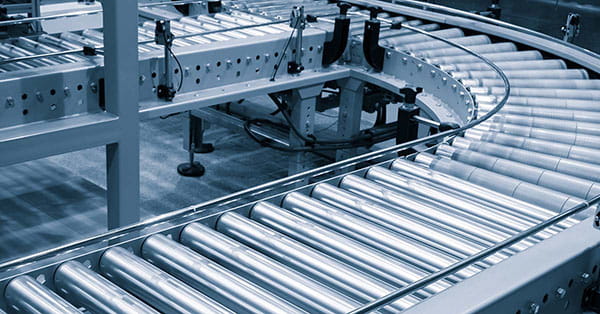North Carolina Conveyor Systems Supplier
Conveyors and automated storage and retrieval systems can increase the efficiency of your storage operations, enhance safety practices and substantially lower human resource expenses.
Modern conveyors can move everything from heavy pallets to small packages within your facility, and they are an integral part of contemporary material handling design.
Conveyors can be grouped in three different categories for most material handling operations:
- Powered roller or belt conveyor systems (for carton handling)
- Powered chain or roller systems (for pallet handling)
- Non-powered conveyor systems
Powered Package-Handling Roller or Belt Conveyors
Powered belt or roller conveyors are often used for less bulky pieces like cartons and packages.
Belts are mostly used for moving packages along a line, while roller conveyors are used for accumulating cartons in certain areas along the line.
Belt Conveyors
Invented more than a century ago, conveyor belts are an indispensable piece of many material handling operations. Not as costly as roller systems and oftentimes more appropriate for specific tasks like moving lightweight items, belt conveyors are used in many material handling designs.
Conveyor belts employ a long, looped belt that rides a metal slider belt substructure or an array of non-powered rollers. A motor drives a pulley that turns the belt and advances objects down the conveyor line.
Belt systems are made of an assortment of surfaces and materials in accordance with the function and role of the conveyor. For instance, a conveyor belt surface may be perfectly smooth in areas where items need to be pushed off the line and may have a ridged texture on segments where items have to be transported up slopes.
Roller Conveyors
While belt conveyors still have a place in most operations, newer roller systems offer a number of more useful benefits in many modern material handling applications.
Principal among these, roller conveyors can enable accumulation of objects on the line where belt systems cannot. This is a meaningful contrast because there are countless scenarios where products must decelerate and accumulate in material handling designs. Common situations where accumulation is important are when objects must be temporarily halted before being passed to automated palletizers or sorters.
Many roller conveyors also have the capability to supervise products on the line and utilize zero pressure accumulation, meaning none of the accumulating objects touch each other as they slow down and come to a stop.
Roller conveyors comprise several cylindrical rollers that are generally set up in one of these ways:
- Line shaft conveyors: In a line shaft system, a long tubular shaft runs underneath the cylinders perpendicular to them and is connected to each roller with rubber O-rings. A motor rotates the shaft and thereby rotates the cylinders by way of the connected O-rings. Line shaft configurations are the most inexpensive of all roller setups, but they may also need the most maintenance because the linkages between the shaft and rollers need frequent readjustment and often fail.
- Belt-driven roller conveyors: As you may expect, these systems are powered by a belt that sits beneath the roller surface. A motor drives the belt, which propels the rollers.
- MDR conveyors: Motorized roller conveyors, sometimes called motor-driven roller (MDR) conveyors, are set up in segments where one cylinder from each segment is powered by ’its own drive mechanism. That individuallypowered roller is linked to the others in that segment by way of plastic O-rings and consequently powers all the cylinders in the segment. MDR segments are placed in succession to create the conveyor line.
MDR systems are known for their energy efficiency because: a.) They typically are powered by 24-volt DC motors and b.) The motors can be set up to engage only when an object is present on the roller cylinders and. As a result, they are idle most of the time.
Although the cost of MDR conveyors is higher than line shaft and belt drive rollers, electricity costs and service outlays are usually far lower than the other options mentioned. - Segmented belt conveyor: The principle of MDR conveyors ultimately begat the development of segmented belt conveyors. Similar to MDR systems, segmented belts operate independently and offer many of the same benefits of MDRs, including accumulation potential.
Powered Pallet Handling Conveyors
Powered pallet handling conveyors are quite often coupled with AS/RS systems and automatic palletizers. Pallet handling conveyors can generally handle pallets of up to 4,000 poundsand proceed at a much slower rate than carton handling conveyors, many times at speeds as low as four pallets per minute.
Pallet handling conveyors come in two types: roller conveyors and chain conveyors.
- Pallet handling chain conveyor: Perhaps the simplest of all conveyor systems, pallets on a chain conveyor line are placed directly on two or more lengths of heavy-duty chain. Motors propel the lengths of chain which consequently advance the pallets down the line.
- Pallet handling roller conveyor: Similar in concept to motor-driven roller conveyors, pallet handling roller conveyors use larger rollers and heavy-duty chains to join the motorized cylinder to the remaining rollers in a conveyor segment.
Non-Powered Conveyors
Roller or skatewheel conveyors are the most common types of non-powered conveyors used in material handling. These types of systems use gravity or inertia to move smaller loads though pick modules, warehouses, workstations, automated sorters, loading docks and package-sorting areas.
Skatewheel systems comprise numerous individual wheels and require minimal power to sustain the inertia of items as they move down a conveyor line. As a rule, they move objects quicker than non-powered roller systems, and they have more versatility when it comes to configuration. Because they’re standalone wheels in contrast to a belt, they may be used in curved segments of a conveyor system.
In general, non-powered roller configurations are not as expensive as skatewheel conveyor configurations. They’re often used for workstations, pick modules and other zones where it’s beneficial to have a level surface to perform tasks. Roller conveyors are also used to decelerate items that are coming from higher speed systems like sorters so that employees can keep pace with conveyor performance.
Non-powered conveyors have a serious liability compared to powered conveyors: By applying gravity and inertia to move materials, you forego the option to directly manage the force applied to those materials. In other words, you have very little influence on the inertia and speed of materials on your conveyor line.
Conveyor Companies Near Me
If you’d like a complete evaluation of conveyor system options for your storage facility, DC or other material handling operation, contact a professional at Carolina Handling.
-
-
Proudly serving
Huntersville, Cornelius,
Matthews, Mint Hill,
Fayetteville, Wilmington,
Concord, Asheville,
Gastonia, Kannapolis,
Mooresville, Hickory,
Indian Trail, Monroe,
and the entire
State of North Carolina.
You May Also Like:
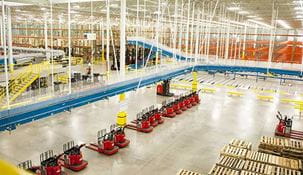
Automation
Carolina Handling can help you automate every aspect of your warehouse operation to increase efficiency.
Learn More
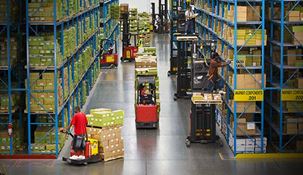
Optimization
Optimize everything in your warehouse to improve productivity and reduce operating costs.
Learn More
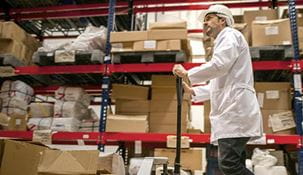
Warehouse Products
Looking for the right product for your operation? We have everything you need to do business in stock.
Learn More
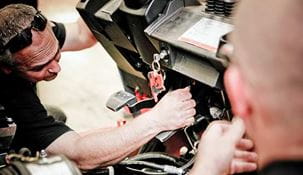
Service Maintenance
Providing superior lift truck service and maintenance for our customers is Carolina Handling's highest priority.
Learn More


